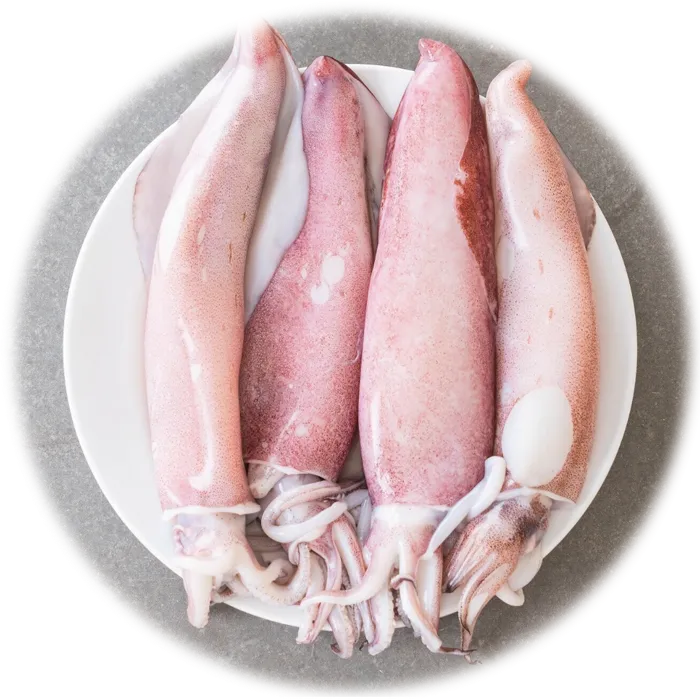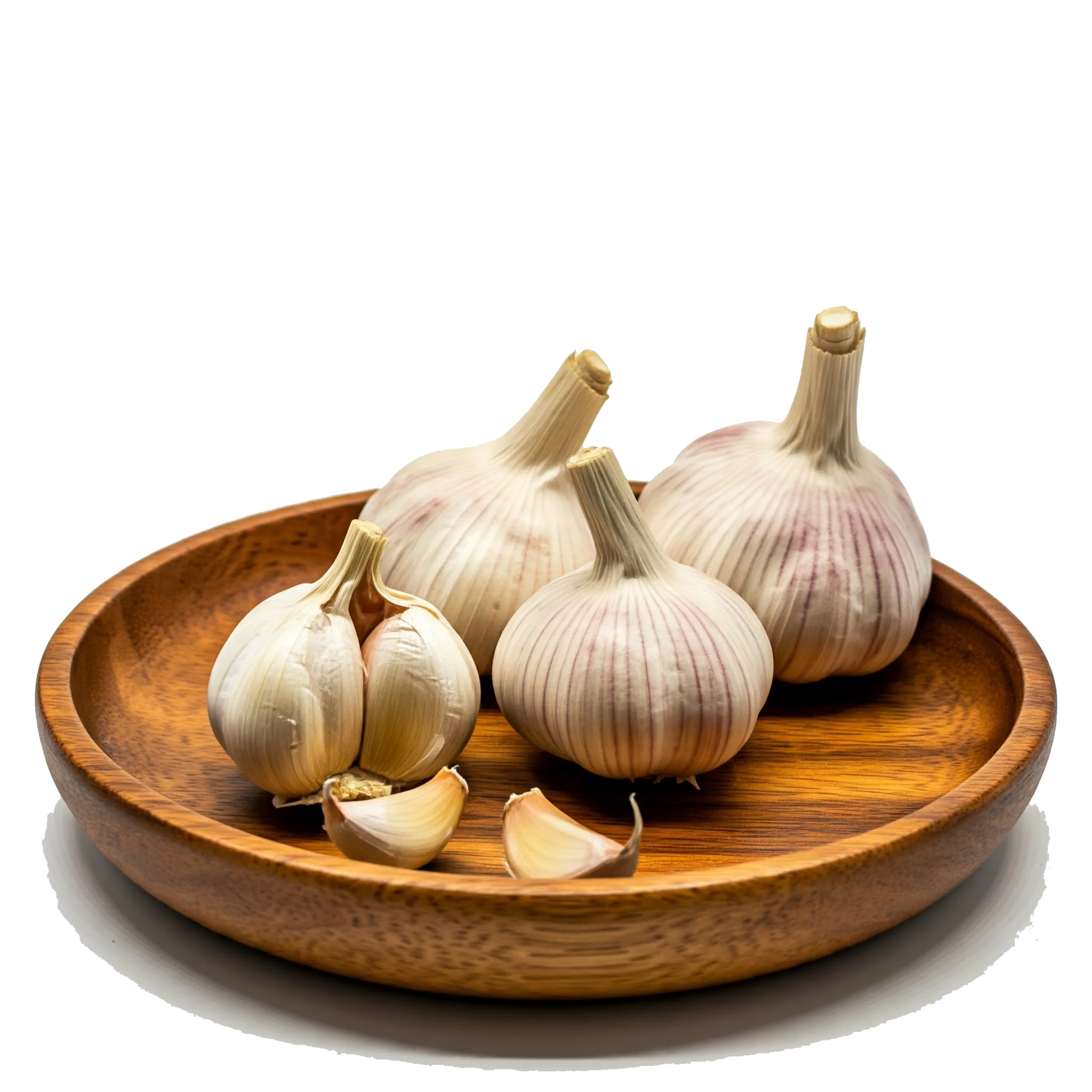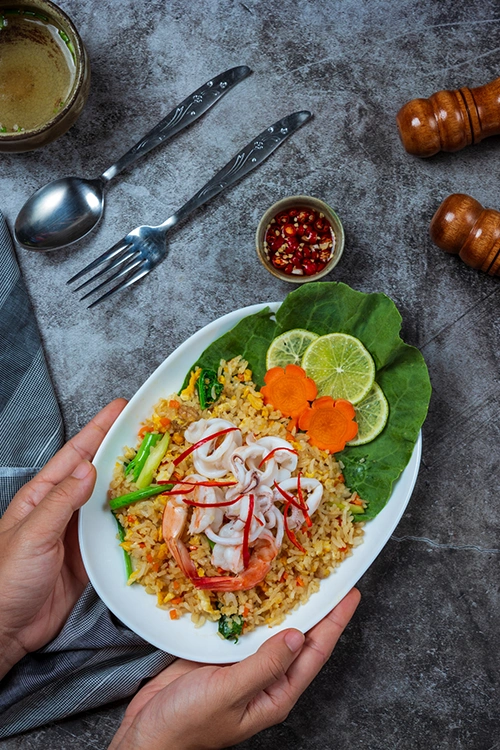

Top Health Benefits of Thai Seafood Fried Rice You Need to Know
Thai Seafood Fried Rice is a nutritionally rich and satisfying dish that combines the high-quality protein of shrimp and squid with the energy-giving complex carbohydrates found in rice. The seafood components offer lean protein, omega-3 fatty acids, vitamin B12, selenium, and iodine—essential nutrients for brain health, metabolism, and immune support. The inclusion of vegetables like carrots, lime, and leafy greens contributes antioxidants, fiber, and vitamins such as A and C, which promote digestive health and strengthen the immune system. The egg adds additional protein and healthy fats, while the small amount of cooking oil provides essential fatty acids, especially if healthier oils such as olive or avocado oil are used. This meal strikes a wholesome balance between macronutrients, making it suitable for those looking to maintain energy levels, support muscle maintenance, and enjoy a flavorful, nutrient-dense meal without excessive calories.
 White Rice : 4 Cup
White Rice : 4 Cup Shrimp : 200 g
Shrimp : 200 g Calamari : 200 g
Calamari : 200 g Carrot : 1 Piece
Carrot : 1 Piece Broccoli : 1 Cup
Broccoli : 1 Cup Garlic : 3 clove
Garlic : 3 clove Onion : 1 Piece
Onion : 1 Piece Chicken Egg : 2 Piece
Chicken Egg : 2 Piece Soy Sauce : 3 Tablespoon
Soy Sauce : 3 Tablespoon fish sauce : 1 Tablespoon
fish sauce : 1 Tablespoon Salt : as needed
Salt : as needed black pepper : to taste
black pepper : to taste Sesame Oil : 3 Tablespoon
Sesame Oil : 3 Tablespoon Lemon : 2 Piece
Lemon : 2 Piece Lettuce : 8 sheets
Lettuce : 8 sheets Green onions : 5 Piece
Green onions : 5 PieceRecipe :
Serves 4 People
Enjoy your flavorful and protein-packed Thai Seafood Fried Rice!
When preparing Thai Seafood Fried Rice, there are a few essential tips to ensure the best taste and texture. First, use day-old cooked rice to prevent the dish from becoming soggy; fresh rice tends to release too much moisture when stir-fried. Second, make sure the seafood—especially shrimp and squid—is not overcooked, as they can turn rubbery and lose their delicate texture. Cook them quickly over high heat until just done. It’s also important to prepare all ingredients in advance, including sliced vegetables and seasoning sauces, because stir-frying is a fast process and doesn’t allow time for prepping mid-cooking. Use a hot wok or deep frying pan, which allows for quick and even cooking, helping develop that signature slightly smoky “wok hei” flavor. Finally, always taste and adjust seasonings like soy sauce or fish sauce gradually, as seafood can already contain natural saltiness.

Thai Seafood Fried Rice is highly adaptable but not universally compatible with all diet types. It is particularly well-suited for high-protein, low-calorie, and Mediterranean-style diets due to its lean seafood, vegetables, and moderate use of healthy fats. For Paleo eaters, substituting white rice with cauliflower rice makes it compliant. However, this dish is not suitable for vegans or vegetarians unless the seafood is replaced with plant-based proteins like tofu or tempeh. It is also not keto-friendly in its traditional form, as white rice contains a high amount of carbohydrates, though a cauliflower rice substitution can make it appropriate. For those following a gluten-free diet, it's crucial to ensure that all sauces used, such as soy sauce, are certified gluten-free. Additionally, the dish can be tailored to fit DASH guidelines by minimizing sodium through reduced-sodium sauces. By making minor ingredient adjustments, this flavorful dish can fit a wide variety of healthy eating patterns.
ladan (May 21, 2025, 12:14 a.m.) : very good